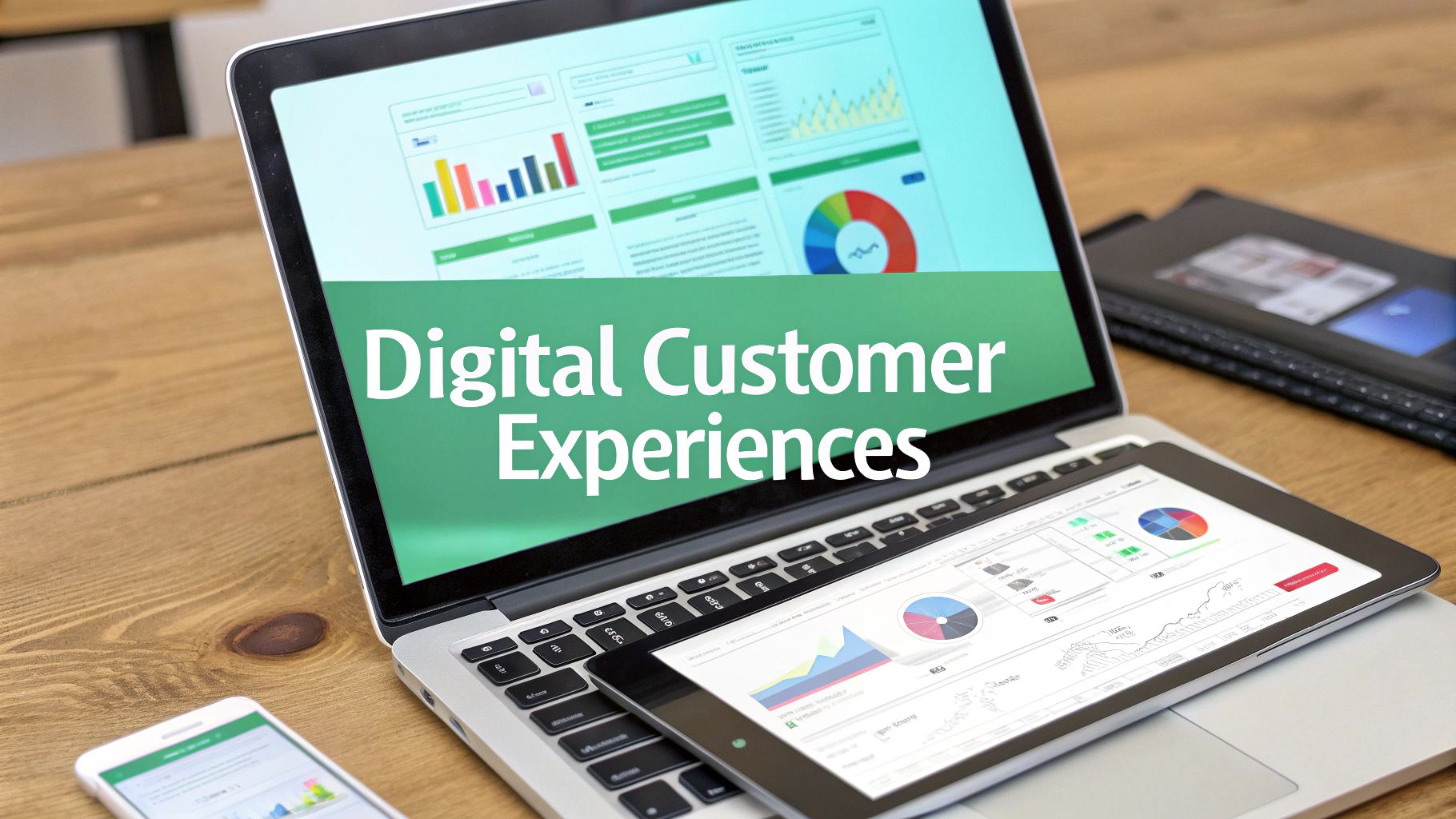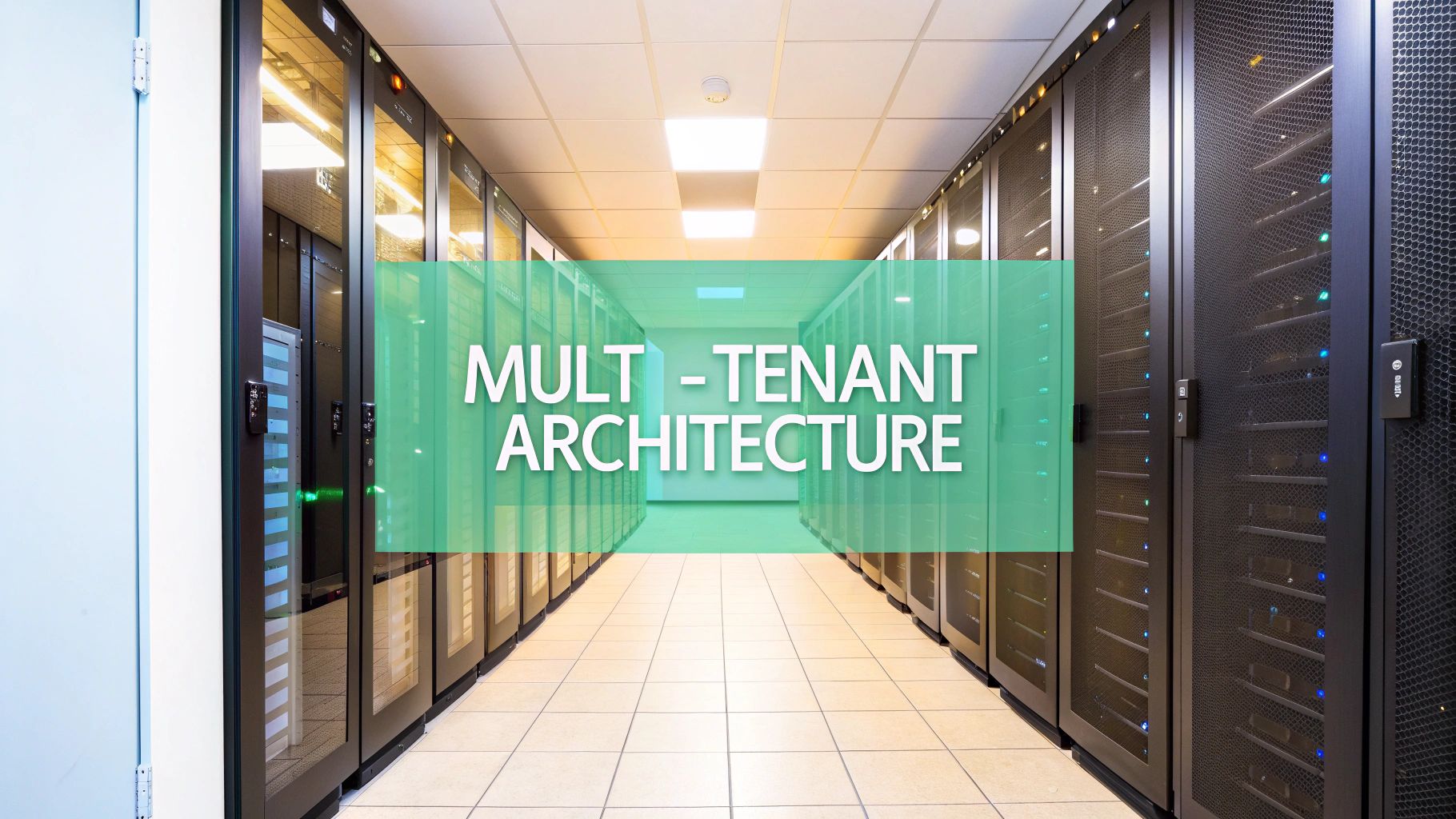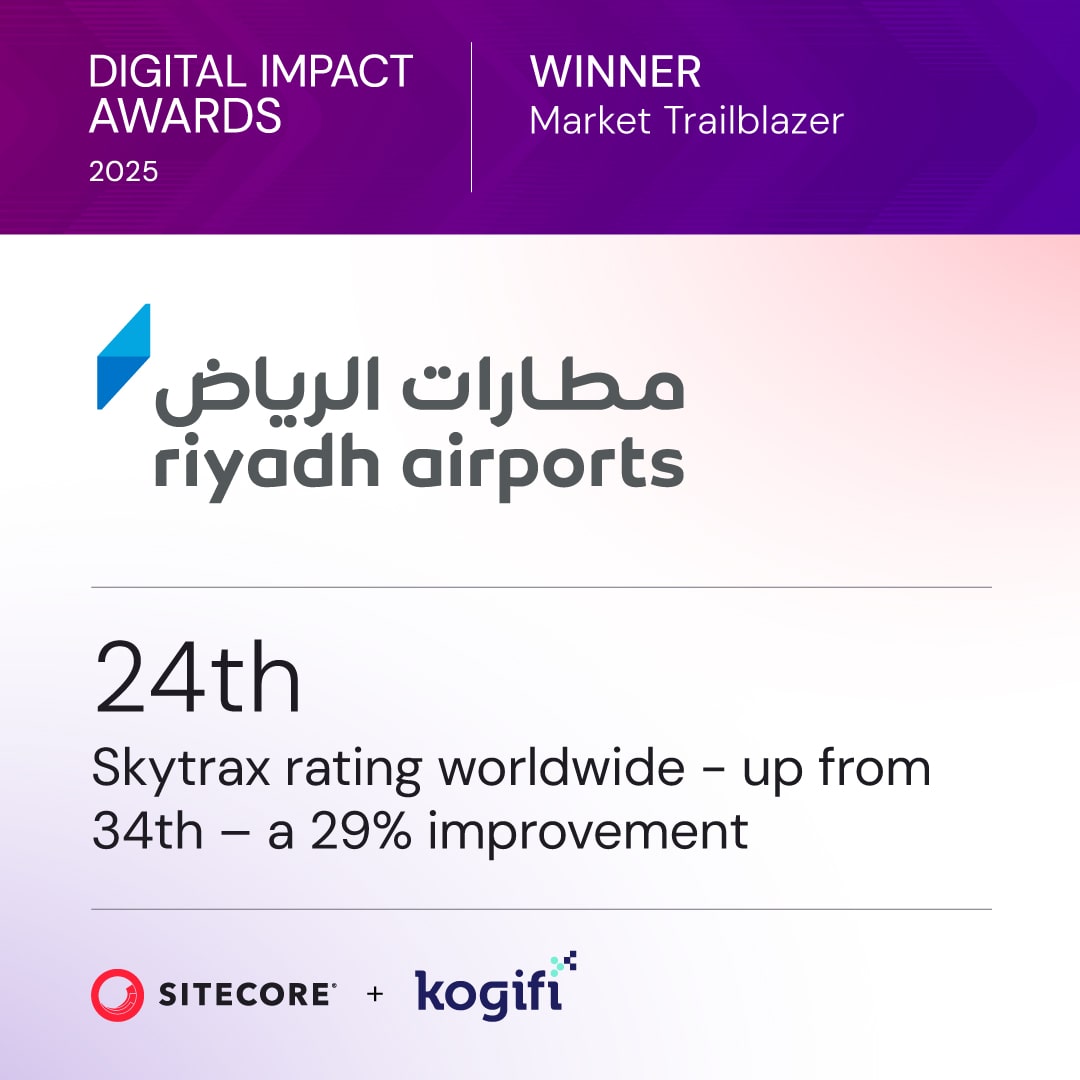Continuous monitoring changes how businesses manage third-party compliance. Instead of relying on outdated, periodic audits, it provides real-time insights into vendor risks and compliance status. This proactive approach helps identify issues early, reducing the chances of costly violations, fines, or reputational damage. Here's what you need to know:
-
Key Benefits:
- Real-time risk assessments instead of periodic checks.
- Automated tools and data analytics replace manual audits.
- Faster issue detection and resolution.
- Better alignment with regulatory frameworks like GDPR, HIPAA, and PCI DSS.
-
Core Features:
- Live alerts for compliance deviations.
- Continuous evidence collection for audits.
- Automated vendor reassessments based on risk levels.
-
Implementation Steps:
- Catalog and classify vendors by risk level.
- Define compliance controls and documentation requirements.
- Use automated systems for monitoring and reporting.
This approach ensures businesses stay ahead of regulatory demands while improving vendor oversight and reducing compliance costs. Continuous monitoring isn't just about managing risks - it's about staying prepared in an ever-changing compliance landscape.
Master Third-Party Risk with Continuous Monitoring
Understanding Continuous Monitoring for Third-Party Compliance
Continuous monitoring in third-party risk management takes oversight to the next level by offering real-time evaluations of external vendors and service providers. This method ensures ongoing attention to compliance, cybersecurity performance, and risk management. By continually assessing vendor performance and adherence to requirements, organizations can quickly identify and address potential risks. This proactive approach supports the broader goal of maintaining third-party compliance while adapting to an ever-changing risk environment.
In practice, continuous monitoring ensures that vendors consistently meet industry standards, regulatory requirements, and contractual obligations. It provides instant visibility into shifts in their security posture, allowing organizations to respond swiftly to new risks or emerging threats.
Interestingly, research shows that 86% of security providers are exploring the idea of offering continuous compliance as a service, while 70% of clients express interest in adopting such services. This highlights a growing understanding that traditional compliance methods often fall short in addressing today’s fast-paced threat landscape.
Core Elements of Continuous Monitoring
An effective continuous monitoring system relies on several essential components that work together to ensure thorough oversight:
- Real-time alerts and dynamic risk scores: These provide immediate notifications about deviations and keep the risk landscape up-to-date.
- Automated reassessments: By continuously comparing vendors against established criteria, these reduce the manual effort required for periodic reviews.
- Evidence logging: This feature automatically documents monitoring activities, findings, and remediation efforts, creating a detailed audit trail that proves invaluable during regulatory reviews.
Benefits Over Periodic Reviews
Continuous monitoring offers clear advantages compared to traditional periodic assessments. First, it enables quicker response times by identifying issues within hours or days rather than months. Second, the continuous collection of compliance evidence ensures that organizations are always prepared for audits, eliminating the scramble for documentation and reducing compliance costs. Lastly, it promotes proactive problem-solving, addressing issues before they grow into larger problems.
U.S. Regulatory Framework Alignment
Continuous monitoring aligns seamlessly with major U.S. regulatory frameworks, which increasingly emphasize ongoing oversight. For example:
- HIPAA: Requires organizations to maintain ongoing safeguards, which continuous monitoring supports effectively.
- SOC 2: Demands evidence of controls over security, availability, processing integrity, confidentiality, and privacy - areas where continuous monitoring excels by providing real-time data.
- PCI DSS: Calls for regular security testing and continuous vulnerability scanning, both of which are efficiently handled by automated monitoring systems.
- CCPA and CPRA (California): Require ongoing attention to data privacy practices, ensuring vendors consistently adhere to data handling protocols.
On average, organizations must comply with 3–5 regulatory frameworks, making continuous monitoring a practical solution to manage overlapping requirements. However, challenges remain. Many providers - 45% - report lacking the resources for continuous compliance, while 42% cite cost barriers, 37% point to insufficient expertise, and 36% struggle with inadequate tools. Despite these hurdles, 75% of providers see compliance as a high-growth area, with 70% aiming for double-digit annual recurring revenue growth. This momentum underscores the increasing adoption of continuous monitoring.
How to Implement Continuous Monitoring for Third-Party Compliance
Continuous monitoring transforms traditional vendor management into a proactive, real-time process. Organizations that adopt this approach often gain better visibility into risks and improve their readiness to meet compliance requirements. Success hinges on thorough planning and execution across three essential steps.
Catalog and Classify Your Vendors
Start by building a detailed inventory of all third-party relationships within your organization. This isn’t just a list of vendor names - it’s a complete record of their roles, access levels, and potential impact on your business.
Pull data from teams like procurement, IT, legal, and operations to ensure no vendor is overlooked. For each vendor, document contract terms, services provided, data access permissions, geographic location, and certifications.
Next, classify vendors based on risk. Use a tiered system to guide your monitoring priorities:
- High-risk vendors: These include providers with access to sensitive customer data, critical systems, or regulated information, such as cloud service providers or payment processors.
- Medium-risk vendors: These vendors support important but less critical functions, like marketing platforms or secondary software tools.
- Low-risk vendors: These are vendors with minimal data access and limited operational impact, such as office supply companies.
When classifying, consider factors like data sensitivity, regulatory obligations, financial exposure, and how dependent your operations are on each vendor. For example, a small vendor managing HIPAA-protected health information would rank higher than a larger vendor supplying general office equipment.
Once your inventory is complete, map specific compliance controls to each vendor category.
Define Controls and Compliance Requirements
After categorizing your vendors, establish clear controls that align with relevant regulations and internal policies. This ensures your monitoring efforts are both thorough and aligned with your compliance goals.
Start by identifying the regulatory frameworks that apply to each vendor. For instance, a healthcare organization might need to confirm HIPAA compliance for vendors handling medical data, while a financial services company would focus on SOX compliance for accounting software. Matching vendor services to applicable regulations helps avoid compliance gaps.
Define specific, measurable controls to reduce ambiguity. For example, instead of stating "use strong security measures", specify "require multi-factor authentication for admin accounts" or "encrypt data in transit and at rest using AES-256." These precise requirements make it easier to automate monitoring and enforce standards.
Also, establish clear documentation guidelines. Decide what evidence vendors must provide and how often updates are required. For instance, certifications might need annual renewals, while vulnerability scans could be reviewed quarterly. Standardizing documentation formats simplifies the review process and helps track vendor performance over time.
Consider creating compliance matrices to map controls to regulatory requirements. These matrices not only demonstrate compliance during audits but also help identify overlaps where one control satisfies multiple requirements - or gaps where new controls are needed.
Set Up Automated Monitoring Systems
Leverage technology to automate and streamline continuous compliance checks. Automation shifts periodic reviews into ongoing oversight that adapts to evolving risks.
Configure alerts thoughtfully to balance thoroughness with practicality. For example:
- Set immediate alerts for critical issues like security breaches or expired certifications.
- Use weekly summaries for medium-priority concerns, such as minor policy violations or upcoming renewal deadlines.
- Generate monthly reports for trend analysis and overall program performance.
Reassessment schedules should align with vendor risk levels and regulatory demands. High-risk vendors might require daily or weekly checks for key controls, while medium-risk vendors could be reviewed monthly and low-risk vendors quarterly. Additionally, trigger event-driven assessments for significant changes, such as new data processing activities or reported security incidents.
Automating evidence collection reduces manual effort and ensures consistency. Systems can automatically pull data like security scan results, certification updates, and compliance attestations. Direct integrations with vendor systems can further streamline this process, eliminating the need for manual uploads.
Dashboards are key for keeping stakeholders informed. Design role-specific dashboards to provide the right level of detail:
- Executives: High-level metrics and trends.
- Operational teams: Vendor-specific details and remediation tracking.
Use role-based access controls to protect sensitive vendor information and ensure appropriate visibility.
Before fully deploying your system, test it thoroughly. Run it in parallel with existing processes to validate accuracy and completeness. Consider rolling it out gradually, starting with high-risk vendors to maximize the initial impact, then expanding to medium- and low-risk vendors as the system proves reliable. This phased approach allows for adjustments without overwhelming your resources.
sbb-itb-91124b2
Measuring and Improving Your Monitoring Program
To keep your monitoring program effective, it’s essential to evaluate and refine it regularly. Consistent assessments can reveal gaps, improve resource allocation, and ensure the program adapts to changing risks. Without proper metrics and strategies for improvement, even the best-designed programs can lose their edge. Building on earlier steps, here are key metrics and strategies to help maintain and enhance your program.
Key Metrics to Track
Focus on metrics that highlight compliance and risk management effectiveness. For example:
- Detection, response, and resolution times: These offer insight into how quickly issues are identified and addressed.
- Vendor certification rates: This helps measure the overall compliance health of your vendor network.
- Cost efficiency: Tracking costs can justify investments and ensure the program delivers value.
By covering these critical areas, you can better understand your program’s performance and identify areas for optimization.
Program Development Strategies
Strengthen your monitoring program with targeted strategies aimed at reducing risk and improving efficiency.
- Expand monitoring to fourth parties: Vendors often rely on subcontractors and service providers, which can introduce additional risks. Start by requiring high-risk vendors to share detailed information about their critical subcontractors. Gradually extend your monitoring efforts to include these fourth-party relationships. Clear contractual requirements - like mandatory updates on subcontractor compliance and notifications of significant changes - can help identify potential issues early.
- Use predictive analytics: Shifting from reactive to proactive risk management is possible with predictive analytics. Analyze historical data to spot patterns that may signal future compliance issues, such as vendors frequently missing certification deadlines or experiencing a rise in incidents. Risk scores generated through analytics and machine learning can help you focus your monitoring efforts on vendors with higher risk profiles.
- Identify and address gaps: Regularly review your monitoring processes to uncover blind spots. This includes evaluating your vendor inventory to identify unmonitored relationships and ensuring your controls align with current regulations and industry standards. Gathering feedback from operational teams can also provide valuable insights into areas needing improvement.
- Improve technology integration: Boost efficiency by connecting your monitoring systems with other business tools like procurement, contract management, and risk management platforms. Automating workflows - such as setting reminders for contract renewals or escalating issues when certifications are about to expire - can streamline operations and reduce manual effort.
- Enhance stakeholder engagement: Keep organizational support strong by clearly communicating the program’s value. Use executive dashboards to highlight successes and share compelling stories that demonstrate impact. Provide training to ensure all teams understand their roles in vendor compliance, and hold regular feedback sessions with vendor management teams to address challenges and identify opportunities for further improvement.
How Kogifi Supports Continuous Monitoring Implementation

Integrating continuous monitoring into digital infrastructures can be a tough challenge for many organizations. Kogifi steps in with its expertise in platforms like Sitecore, Adobe Experience Manager, and SharePoint to strengthen third-party compliance frameworks. This knowledge forms the backbone of their tailored monitoring services.
Kogifi's Monitoring Services
Kogifi offers a range of services designed to establish and maintain continuous monitoring capabilities. Their platform audits focus on evaluating third-party integrations with core CMS structures, helping identify gaps that might otherwise go unnoticed. With 24/7 support, they ensure systems remain functional and responsive at all times. Additionally, their services include migration, integration, bug fixing, and recovery, which simplify workflows and address technical hiccups without delay.
Real-World Implementation Support
Kogifi maximizes the potential of platforms like Sitecore, Adobe Experience Manager, and SharePoint to enable continuous monitoring. By configuring these platforms to align with compliance goals, they enhance vendor oversight and streamline the process of tracking vendor interactions. This ensures compliance teams can quickly identify and resolve any issues that arise, keeping operations smooth and compliant.
Conclusion: Strengthening Third-Party Compliance Through Continuous Monitoring
Shifting to continuous monitoring transforms third-party compliance from a reactive process into a proactive strategy. With real-time oversight, businesses gain instant visibility into vendor activities, allowing them to address potential compliance issues before they escalate into costly violations or security breaches. This shift delivers clear advantages across the entire compliance lifecycle.
By maintaining constant vigilance, companies can create resilient vendor ecosystems capable of adapting to changing compliance demands and market conditions. This approach leads to quicker incident responses, lower compliance costs, and stronger relationships with regulatory bodies. Monitoring vendor performance consistently not only mitigates risks but also fortifies critical partnerships.
Achieving real-time risk management requires a thoughtful strategy that combines automated tools, well-defined controls, and ongoing evaluation. The foundation for success lies in the steps discussed earlier: effective vendor classification, clear compliance requirements, and scalable monitoring systems.
Kogifi’s expertise in enterprise platforms like Sitecore, Adobe Experience Manager, and SharePoint offers the technical backbone for implementing continuous monitoring. Their services - ranging from platform audits and system integrations to 24/7 support - ensure that compliance frameworks remain robust and adaptable. This comprehensive approach helps organizations turn compliance challenges into opportunities for competitive advantage.
The future of third-party compliance belongs to businesses that monitor continuously, respond swiftly, and adapt seamlessly. Embracing these practices ensures success in navigating complex regulatory environments while maintaining strong, essential vendor relationships.
FAQs
How does continuous monitoring support compliance with regulations like GDPR and HIPAA?
Continuous monitoring plays a key role in helping organizations stay compliant with regulations like GDPR and HIPAA. By providing real-time insights into compliance status, it flags potential issues as they surface, allowing businesses to address them promptly before they turn into major problems.
With ongoing system tracking and analysis, companies can take a proactive stance to reduce risks, protect sensitive information, and meet regulatory standards. This approach not only lowers the chances of fines or data breaches but also builds trust with customers and stakeholders - especially in sectors like healthcare and data privacy where compliance is critical.
What are the key steps to start continuous monitoring for third-party compliance?
To kick off continuous monitoring for third-party compliance, the first step is to pinpoint the critical systems and policies that need to be monitored. This ensures your efforts are focused where they matter most. Be sure to clearly outline your monitoring objectives so they align with your compliance goals, creating a structured and effective plan.
The next step is to conduct a thorough risk assessment. This helps uncover potential vulnerabilities and prioritize the areas that need the most attention. Where possible, streamline the process by automating monitoring tasks. Automation not only saves time but also provides real-time insights, reducing the need for manual intervention.
Lastly, ensure your monitoring strategy adheres to all relevant regulations and industry standards. This will establish a solid framework for maintaining compliance over time.
How does continuous monitoring help lower compliance costs compared to traditional periodic reviews?
Continuous monitoring plays a key role in cutting compliance costs by catching and addressing issues as they arise, eliminating the need for costly, large-scale audits. This real-time approach not only saves money but also helps organizations avoid fines and penalties by ensuring they consistently meet regulatory requirements.
On top of that, continuous monitoring simplifies compliance processes. By automating tasks and reducing reliance on manual efforts, it saves both time and resources. By proactively managing risks, organizations can maintain compliance in a way that's both efficient and economical.








































